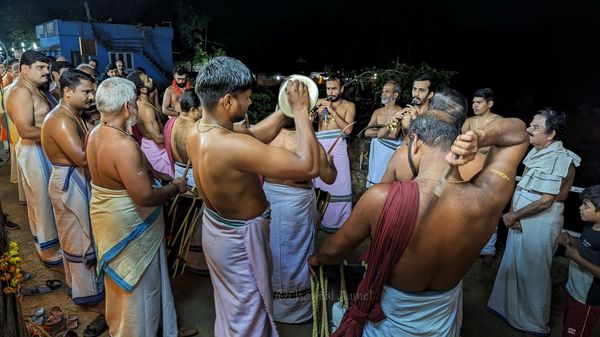Like a jeweller, the painter creates fleeting ornaments that will adorn the sturdy neck, arms, wrists, and ankles of the sylvan deity. Another painter meticulously paints the peacock feather ocelli on either side of the deity, creating the illusion of a majestic mane.
